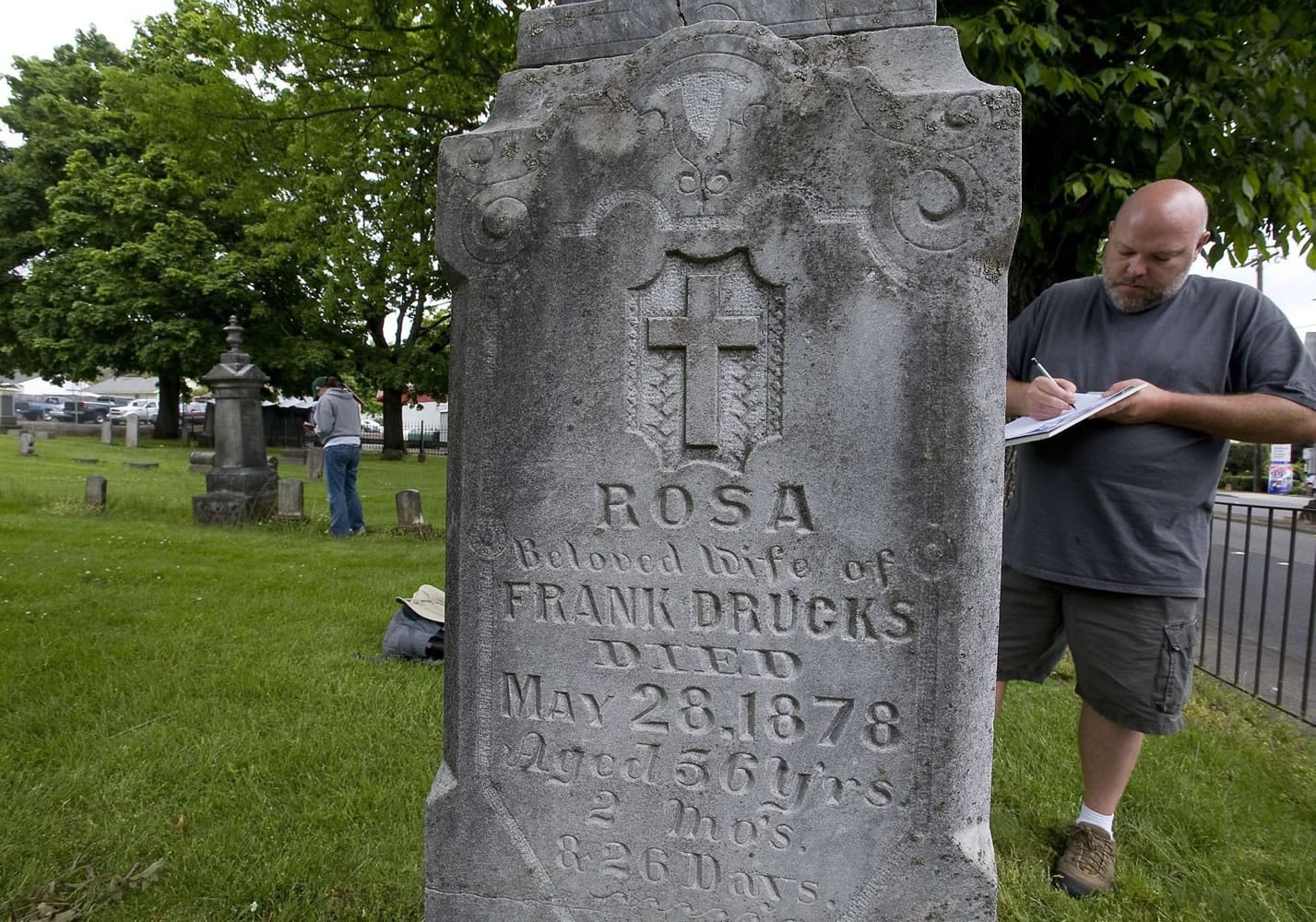An early Vancouver cemetery was established near what now is The Academy, but the graves had to be relocated when a road through the site was planned. The city purchased 10 acres in July 1867 for what now is the Old City Cemetery.
Even history that is etched in stone doesn’t last forever.
Sometimes, it barely lasts a century.
That’s why some students at Vancouver’s annual archaeological field school are taking a side trip this summer to the Old City Cemetery.
Instructor Jacque Marcotte set five college students to the task Wednesday of documenting and recording gravestones and monuments in the 144-year-old cemetery.
Some of the markers have been vandalized, and some just have been victimized by a century or more of weathering.
“A lot of the marble stones are eaten away by rain,” said Marcotte, a teaching assistant at Portland State University. “They lose their inscriptions.
“We can’t stop it,” she said. “But those we catch early enough, we can record it.
“You see more granite in the 1910s and 1920s. It holds up better,” Marcotte said.
Sarah O’Keefe, a senior at Washington State University Vancouver, was using a tape to measure a family monument flanked by individual headstones. There was a jagged spot atop the monument, where something had been snapped off.
“There has been a lot of damage” in the cemetery, O’Keefe said. “It’s sad that people could be so disrespectful.”
O’Keefe logged the dimensions in a four-page form. Other students had their own copies of the form, and were filling in categories such as inscriptions, material, design and condition.
There was a list of a dozen different kinds of decay, including weathering, cratering, delamination, flaking and cracking.
Shannon Ford, a Portland State University graduate student from Ridgefield, was examining symbols engraved on the monument stones. Many of them, crafted with a light touch, were fading even faster than the names and dates that had been more boldly inscribed on the stones.
Symbols include lambs, doves, praying hands and open gates signifying the entry to heaven.
The students’ findings will eventually help the Clark County Genealogical Society, which took the Old City Cemetery under its wing about three years ago.
“Anything that raises the visibility of the cemetery is good,” said Richard Engstrom, a member of the Genealogical Society.
“We’ve gotten two grants to do repair work and we’ve done about 50 markers so far,” Engstrom added.
The cemetery project is part of the annual field school conducted by Doug Wilson, a National Park Service archaeologist based at Fort Vancouver. The primary focus of the school this summer is at the “workers village” area on the Fort Vancouver National Historic Site. The cemetery at Mill Plain and Grand boulevards provides a different sort of learning environment.
“This is a huge piece of Vancouver’s history,” Marcotte said. It’s the final resting place for around 8,000 people, after all. And the spot where she was standing had special significance. A glance at the marker next to Marcotte showed it’s the grave of Clark County pioneer Esther Short.
“There are a lot of great stories here. Some sad ones, too,” Marcotte said.
“I did a project here when I was an undergrad, maybe six years ago,” when Marcotte noticed one marker that she still remembers.
“A woman gave birth to twins,” Marcotte said, “and they all died.”




